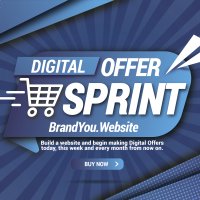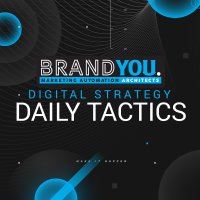Whether you’re a large retailer, restaurant chain or small business that is just getting off the ground, email is an important cog in your overall Digital Strategy.
The size of you enterprise does not matter. There are thousands of emails being sent every week from companies around the world and determining the best Email Follow-Up Strategy can feel like a huge task to cross off your list.
Choosing the right Email Follow-Up Strategy (sometimes called a nurturing sequence or drip campaign) is important for your business. Successful email and nurturing campaigns require the right strategy to reach your goals, whether customer education, lead generation or something else.
There’s a reason an Email Follow-Up Strategy has one of the highest ROIs out of any digital marketing strategies. And no, it isn’t because people love receiving spam. It’s because email has a high open rate and a high conversion rate, and the acquisition cost is low compared to other channels such as Facebook, Instagram, Twitter and Google.
In this article, I’ll focus on some of the critical aspects of an Email Follow-Up Strategy that will better equip your business no matter which industry your business is in.
What is an Email Follow-Up Strategy?
An Email Follow-Up Strategy is a powerful way to leverage your existing marketing efforts by building relationships with potential customers over time.
According to Gartner, an Email Follow-Up Strategy is becoming more important, too. 40% of marketing leaders said improving lead quality is their top objective for 2022, and 38% said their top priority is to drive increased sales across identified leads. An Email Follow-Up Strategy helps with both.
It's important because it helps bridge the gap between lead generation and customer conversion. By using an Email Follow-Up Strategy, you create a communication plan specifically for your leads based on where they are in their buyer's journey.
Your content needs to be personalized, relevant and valuable to each individual contact because it will help solve their problems at appropriate stages in the buying cycle.
Your Email Follow-Up Strategy is one of the most important steps in any effective Digital Strategy. It's a systematic process of communicating with leads at the right time, in the right way, so that they're moved through education closer to becoming an actual paying customer.
Follow the steps below to understand how to implement Email Follow-Up Strategy for you business.
1. Determine the Goal for Your Email Follow-Up Strategy
Your Dream Customer is online more often than not and has their smartphone close by (or in hand). They want to engage with your brand and make a purchase.
So how do you get them to buy, come back, and buy again?
It could be through discounts, free shipping, or exclusive deals. It could be by sending them content they’re interested in – like helpful blog posts or insider news about your brand. Whatever it takes, this goal should be something you measure and report on weekly, monthly, quarterly and yearly.
Your Email Follow-Up Strategy should be based on actions your leads took or didn't take, and should be hyper-personalized to their situation.
According to Sendlane, there are 8 different types of Email Follow-Up Campaigns that can earn you more sales all year long.
The welcome email
The product recommendation email
The referral email
The promotional email
The upsell and cross-sell email
The customer loyalty email
The survey email
The cart abandonment email sequence
Measure what you do. Keep track of your goals and your metrics so that when it comes time to optimize your lead nurturing, you know if and where improvements are needed.
Focus on engagement over acquisition metrics. Don’t be overly concerned about the number of leads collected; focus on the quality of those leads and the number of leads who are becoming customers or contacting you with an intent to purchase.
Putting yourself in the driver's seat of your Email Follow-Up Strategy means that you're leading it — and if you're leading it, then you should know where you're headed by determining your own goals.
Read: The Digital Offer Sprint: Your Website, Your Content Strategy and Measurable Results
2. Prioritize the Most Qualified Leads
Sales Qualification - or Lead qualification - is a process that involves analyzing a lead's behavior, characteristics and needs to determine their level of fit with your products or service.
Hubspot defines Sales qualification as the process of determining whether a lead or prospect is a good fit for your product or service. It takes place during sales calls and is important when determining which customers may stick around long-term.
The goal of qualification is to find out whether someone has a need for your product and how likely they are to buy it. Engaging the right prospects with the Content Strategy is a critical step in lead qualification.
Another major consideration in lead qualification is to segment your leads based on their likelihood to convert into customers.
Using lead scoring, you can assign points to each lead based on their unique characteristics and behaviors, which enables you to prioritize leads that are most likely to make a purchase.
This makes it possible for you to focus your sales and marketing efforts on only the most qualified leads, which increases your overall conversion rate.
By getting to know your Dream Customer through knowing your ideal customer profile, you can qualify leads based on their demographics, interests, behaviors and needs and then make a more perfect Digital Offer.
Building an Email Follow-Up Strategy takes more than just sending out pre-scripted "drip emails". Knowing how, when, the frequency and to whom you’ll send emails to and why is also important.
3. Determine an Email Follow-Up Strategy Cadence
A cadence - sometimes called a touch pattern - is the method of communication you'll use to stay top of mind with your prospects over time.
Visualize your cadence in writing so that it can help you stay organized and on track with your marketing efforts today, tomorrow, and well into the future. Post it where you can see it easily.
For example, if you are in the eCommerce space, your touch pattern might look something like this:
1st touch – Send email to new leads within 24 hours of an initial inquiry
2nd touch – Send email after 48 hours (if no response)
3rd touch – Send email after 72 hours (if no response)
4th touch – Send email after 5 days (if no response)
5th touch – Send email within 2 weeks (if no response)
Research shows that the optimal time to follow up is 2-3 days after the initial connection. Touching your leads on a consistent schedule builds familiarity with your brand and products, so they’re more likely to convert.
Your Email Follow-Up Strategy is key to keeping your prospects engaged over time and will have a direct impact on the success of your sales process.
4. Educate Customers with Your Email Follow-Up Strategy
The best way to follow up with an Email Follow-Up Strategy is to educate your customer leads using the H.A.S. Value Approach (Help, Answer, Show).
Help: These emails are trying to help the customer solve a problem they have right now, or provide them with information they don't have access to. If they're opening the email, they're probably facing a problem. Help emails work best when customers are looking for a quick solution to a problem.
Answer: The first thing customers want is answers to their questions. If you're not sure which questions to answer, ask your customers. Poll them on Twitter or Facebook or send surveys. Reach out through social media for the questions you need answered.
Show: "Show" what your product can do. Are you selling a product? Use videos or screenshots of your product in action to show off the features that are most important to you. If you want to sell something online then there is no better way than through video...it's the next generation of writing an ad or sales page…video sells!
All of this can be done through a variety of means, such as sending them videos, white papers, infographics or other helpful materials that are relevant to their needs and interests.
The whole purpose of your Email Follow-Up Strategy is to help the prospect move closer to becoming a customer, so it’s important that you start by educating them about the value you can provide.
Educating your audience isn't just getting subscribers to understand what you're offering—although that's definitely part of it.
It's about tailoring your content and message to individual customer needs and wants. Your audience has problems they need solved, so address those issues through education in your Email Follow-Up Strategy.
5. Subject Lines Matter, So Write Ones That Beg to be Opened
The subject line is arguably the most important part of an email. It's the first thing a recipient sees, so it makes sense to take some time to craft it thoughtfully.
Here are some great tips for crafting your own magnetic email subject lines:
The 50/50 Rule of Headlines
One of the best ways to write an effective headline is by using the 50/50 rule. In a nutshell, you should spend about half of the time it takes you to write a blog post writing your headline.
While most people focus on creating great content or writing engaging copy, good headlines are just as – if not more – important than everything else in your blog post.
In fact, according to some of the best copywriters of all time, you should spend half of the entire time it takes to write a piece of persuasive content on the headline.
So if you have a blog post that is really important to you or your business, one that you really want people to read, you should downright obsess over your post title.
The 80/20 Rule of Headlines
The 80/20 rule of headlines states that on average, 8 out of 10 people will read headline copy, but only 2 out of 10 will read the rest. This is what makes headlines so powerful–especially when you use them to lead readers down a path toward a specific outcome.
Headlines aren't just about getting people's attention; they're about leading them somewhere specific and guiding them through your copy so they'll take the action you want them to take (download an eBook, sign up for a free trial, buy now).
Headlines, subheads and bullets should:
Be USEFUL to the reader,
Provide the reader with a sense of URGENCY,
Convey the idea that the main benefit is somehow UNIQUE; and
Do all of the above in an ULTRA-SPECIFIC way.
You've probably received enough marketing emails to know that there are some extremely effective subject lines out there. However, those subject lines don't just happen. They're crafted with care and consideration.
You have to understand how headlines work if you want to use them effectively. The bottomline with writing headlines is that readers have a choice: Either they will read your headline copy or they won't.
6. Make Personalization a Pillar of Your Email Follow-Up Strategy
According to Active Campaign: "Personalization in email marketing refers to the gathering and use of personal information of a contact to customize communication and change content based on what’s most relevant."
5 easy ways to infuse personalization into your Digital Strategy.
Landing Pages: Once you know what’s getting your visitors to your landing page and onto the sales page, now it's time to tailor your message and design to each visitor using analytics tools. These tools will give you insight into how people are navigating your site and what content they may have already read. Use that information to streamline their experience on your landing page by personalizing the messaging, design and value they receive.
Interactive polls & quizzes: There are various interactive emails - surveys, quizzes and polls - that you can create and send out to your target audience. Doing so will help you to gain more information on them and also let them know more about your product. You can then use this information to segment users into lists in your Email Follow-Up Strategy.
Use geolocation: If you are a local business, then geolocation is one of the best tools for increasing your sales. All you need to do is find your target audience and make sure they know how to find you. This can mean showing them products or services that are relevant to their location or by tailoring the language on your site to match what they're looking for.
Know Your Customer's Website Behavior: In order to figure out what your customers want, try looking at where they spend their time on your website. If they're spending a lot of time on one page of your website but not another, this is probably an indication that they really like that specific page -- so it's probably something you should focus on improving.
Know Your Customer's Purchasing Behavior: Businesses need to understand how your customers make purchase decisions, which means you have to have a solid grasp of your customers’ entire sales process: from initial awareness of your brand through the consideration phase all the way through conversion. Whether you want to sell more items or increase the average order value, key stats like average order value and conversion rate will help you identify areas where you can improve.
Personalization is the key to driving engagement with your Content Strategy and boosting sales. It helps you stand out and connect with new potential customers.
7. The Secret Sauce of Segmentation
Segmentation is the secret sauce of successful your Email Follow-Up Strategy. By dividing your leads into definable, actionable parts, you’re able to focus on specific groups of people based on their interests and behaviors.
Segmentation is critical because it allows you to personalize your message specifically to an audience’s unique buying needs and interests. It also enables you to test different components of you Content Strategy and Digital Offers to see what resonates best with one audience versus another—and thus learn which offers are truly most compelling for them.
Segmentation in your Email Follow-Up Strategy works because it allows you to send more personalized relevant messages to your audience. You’re not just sending one email to everyone; you’re sending several different emails to different people. And when someone feels as if you speaking directly to them and their needs, they’re more likely to trust you as a brand.
Customer Segmentation: A Guide to Acquire, Convert and Retain Your Dream Customers
Put Your Email Follow-Up Strategy in Place Today
We hope that you now have the information you need to revamp your Email Follow-Up Strategy. This is an essential component for successful digital marketers, so it’s important to take time to hone your approach with the intention of nurturing leads into sales.
For me, sales begins once the lead first hears about your product. Too many businesses forget that it’s not enough to just post a blog article, tweet something or send out an Instagram post – they have to nurture their leads through all the following phases until they finally become a buyer.
It's a process of small steps and achieving small goals until you achieve the big one: getting them to buy your product.
Need Help?
Our team would love to provide feedback on your online strategy! Schedule a strategy session with Brand You to see how we can help you bring your Digital Strategy to life in your campaign.




